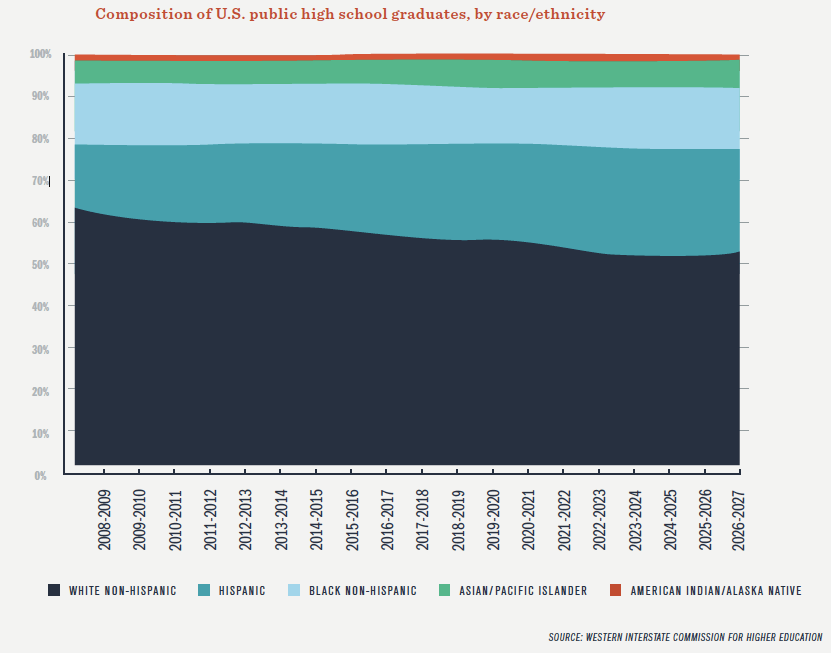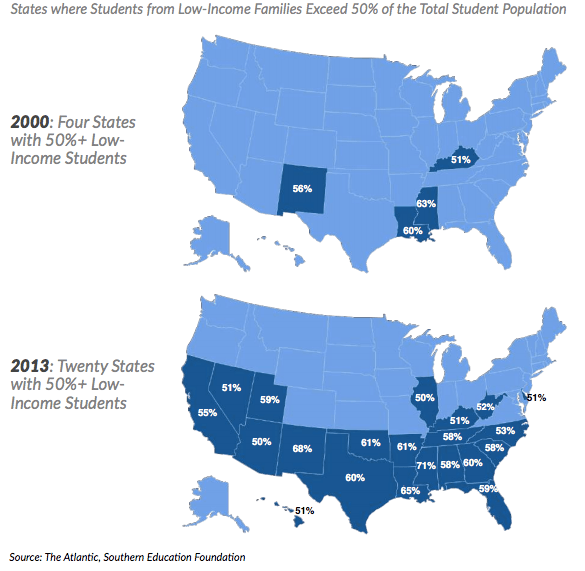The Perfect Demographic Storm
This month, some 3.3 million teenagers will graduate from American high schools. If recent history is any guide, around 65 percent of them will go directly on to college this fall.
While many more campuses are being filled with nontraditional students—working adults, part-timers, and international students—the traditional 18-to-22-year-old market remains the lifeblood of many institutions and is also the most predictable segment to forecast.
For much of the past decade, demographers have been talking about not only a coming downturn in the number of traditional students, but also a drastic shift in the race and ethnicity of high-school graduates.
For many higher-education officials focused on the short-term—especially the perilous economy that has occupied much of their time in recent years—predictions that are a decade away are sometimes easy to ignore. But now those predictions are increasingly becoming reality on the ground.
Nationally, the number of high-school graduates reached a peak in 2011, according to the Western Interstate Commission for Higher Education (WICHE), and have been declining since. While the high school populations of states in the South and West have begun to rebound, those of the Northeast and the Midwest continue to fall.
The Northeast’s graduating class of 2028 is projected to be 10 percent smaller than in 2009, some 66,000 fewer graduates. The Midwest, which produces more graduates than the Northeast in any given year, will face an even steeper decline, WICHE predicts.
At the same time, fewer students in secondary schools are white or black. For instance, according to WICHE, California will have 37,000 fewer white high-school graduates by the end of this decade, which alone will contribute 70 percent of the loss in the West of white students. At the same time, the state will add 28,000 Hispanic students to its graduating classes.

Persistent gaps in college attainment rates remain between white students and Asian students compared to Hispanic students. While the overall proportion of the U.S. population with a college degree has now 40 percent, according to the Lumina Foundation, the attainment rate for Hispanics is 20 percent.
What’s more, the issue of income inequality that has surfaced in this year’s presidential election is of worry to college officials who depend on a certain segment of students to pay full tuition or close to full tuition in order to subsidize other students.
Today, the typical American family makes slightly less than a typical family did 15 years ago. A graphic that I recently came across in a report distributed at the annual ASU/GSV Summit illustrates the impact that flat and declining wages will have on colleges in the coming years. This will mark a sea change for higher education since much of the recent growth in enrollment on campuses was fueled by affluent, well-prepared high-school graduates whose parents attended college.

These demographic trends are already putting more of an emphasis on retention. As mentioned above, some two-thirds of this year’s high-school graduating class will go to college in the fall. But we know from various sources that only about half of students earn a degree or certificate within six years.
Perhaps most problematic is that twenty-somethings make up the largest proportion of adults who have some college credit but no degree, according to the National Student Clearinghouse Research Center. Of the 31 million adults in the U.S. who left college short of a degree, some 12 million of them are in their twenties.
Not only does that represent a market of potential students for colleges, but it’s also why institutions are experimenting with new approaches to helping students succeed. Institutions have hired academic coaches, put in place more intrusive advising for select groups of at-risk students, and coordinated efforts that bring together academic affairs, student affairs, and faculty members.
Many more colleges will have to follow the same playbook if they hope survive the perfect demographic storm that is brewing.